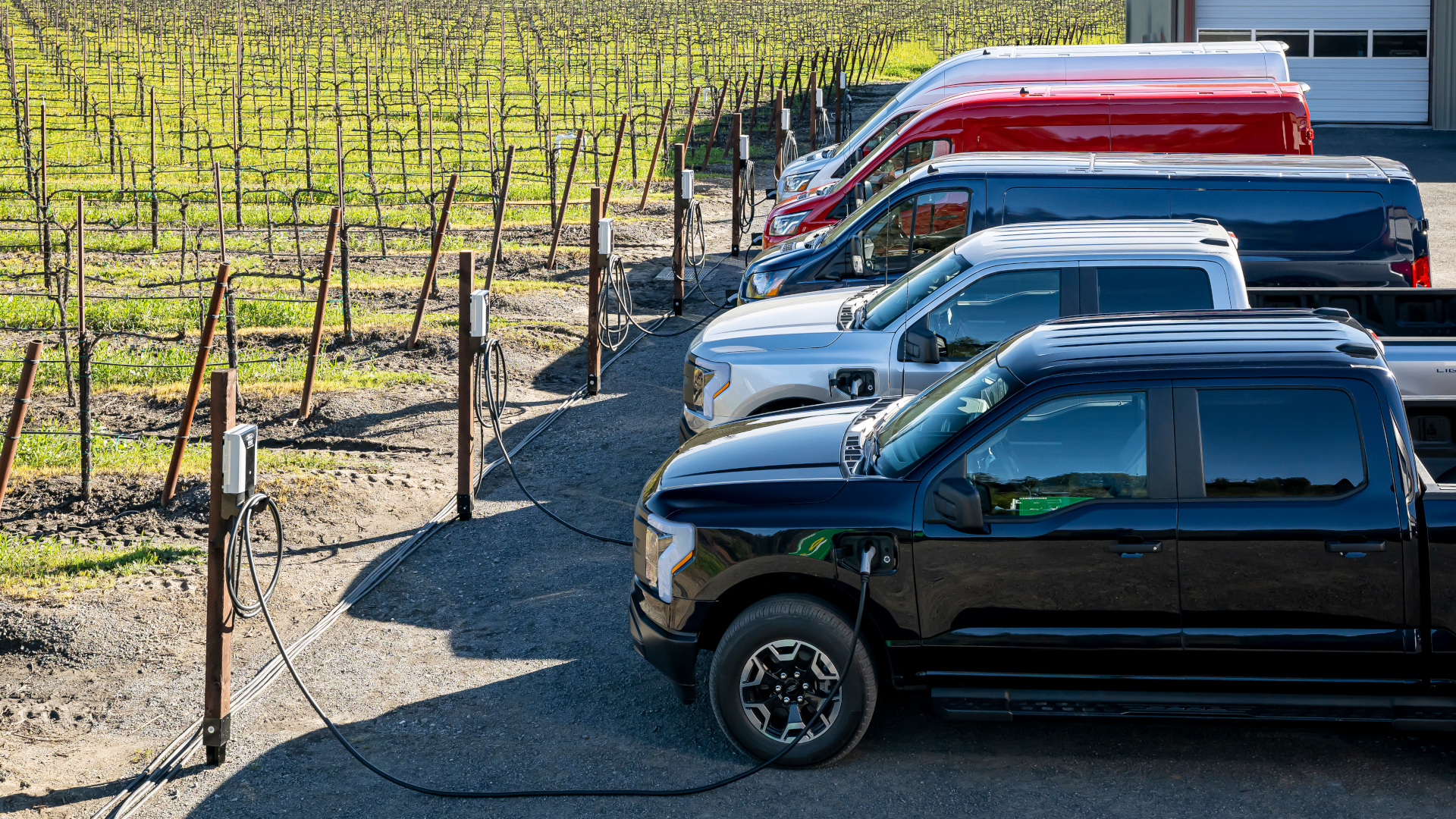

Recharging electric vehicles remains one of the more difficult parts of the transition away from ICE vehicles. For fleet operators, the problem is magnified, as they grapple with how to keep a large number of vehicles charged up and ready to go when needed. With its own electric work vehicles just around the corner, Ford is aiming to deliver simple solutions for commercial fleets with its new Ford Pro charger ecosystem.
The hardware lineup consists of Level 2 AC chargers and Level 3 DC fast chargers intended for use in both home charging and depot contexts. The idea is to provide commercial fleets with rugged chargers specifically designed for use in depot situations, in addition to regular chargers designed for home use.

The Ford Pro chargers and related fleet management software will launch along with vehicles like the F-150 Lightning Pro and E-Transit, aiming to give commercial users the tools they need to switch to EVs from day one. However, the Ford Pro chargers aren’t locked to the brand. The chargers use standard J1772 and CCS-1 connectors and thus can be used with other EVs on the market.
Ford’s offering starts with the simple Ford Pro AC Charging station and Ford Charge Station Pro, with power ratings of 11.5 to 19.2 kW. They’re suitable for depot or home installation, and feature 25-foot charge cables and are internet-connected for interfacing with the Ford Pro software. The Charge Station Pro, as previously announced during the F-150 Lightning launch, lets users power their house from the vehicle if needed for up to three days on a single charge.
For depot use, Ford offers a range of DC fast charger options, configurable for power outputs from 60 to 180 kW. This can be done in the field by installing additional power modules as requirements dictate. The standalone Ford Pro DC Charging Station features two CCS-1 cables for charging multiple vehicles, and is the simplest way to outfit a charging station at a fleet vehicle depot.
However, those wishing to outfit more stalls will likely lean towards the Ford Pro DC Charging Cabinet solution, which can be paired with multiple Industrial DC Dispensers or Commercial DC Dispensers, each of which has two CCS-1 cables for charging vehicles. The cabinet-based system allows up to 3 vehicles to be charged simultaneously, or four vehicles in a sequential, one-at-a-time fashion. It’s available in power levels from 60 to 180 kW, stepping up in 30kW increments.

The Ford Pro system doesn’t just stop at depot chargers, though; it aims to be an all-encompassing ecosystem for fleet operations. To that end, Ford hopes to sit down with fleet customers to help plan their charging infrastructure when they choose to go electric. Ford can also offer fleet buyers access to its BlueOval charger network offering over 70,000 chargers in the US, with over 7,300 of those being DC fast chargers. Fleet vehicles can access these public chargers to stay topped up when out on the road, as needed.
The over-arching Ford Pro E-Telematics system also helps in this regard, letting fleet managers keep an eye on their vehicles over the internet. It allows for fleet charging to be controlled and monitored remotely, something of particular help when trying to save money by charging vehicles in off-peak hours. The Ford Pro fleet management software also helps calculate reimbursements for workers that choose to charge their fleet vehicle at home.
Solutions like these will be key for commercial operators eager to switch their fleets to electric vehicles. A robust charging solution is key to keeping vehicles on the road and making money, and that’s exactly what Ford is hoping to provide.
Got a tip? Let the author know: lewin@thedrive.com